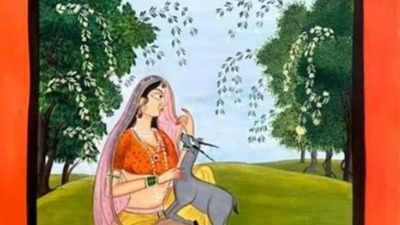Free Courses Sale ends Soon, Get It Now


Free Courses Sale ends Soon, Get It Now



Disclaimer: Copyright infringement not intended.
Context
What is a Geographical Indications (GI) tag?
About Basohli Painting
Features
|
PRACTICE QUESTION Q) Which of the following statements with reference to Basholi Painting is/are correct? a. It gave rise to the Pahari school of paintings. b. The painting style faded in the mid-18th century. c. Krishna is depicted as the protagonist.
Answer: Option 2 |
© 2024 iasgyan. All right reserved